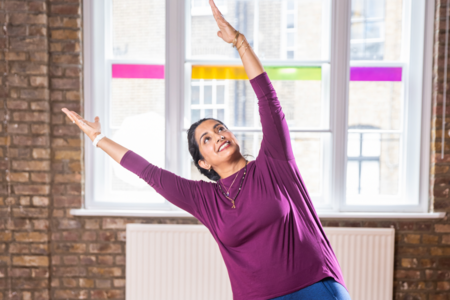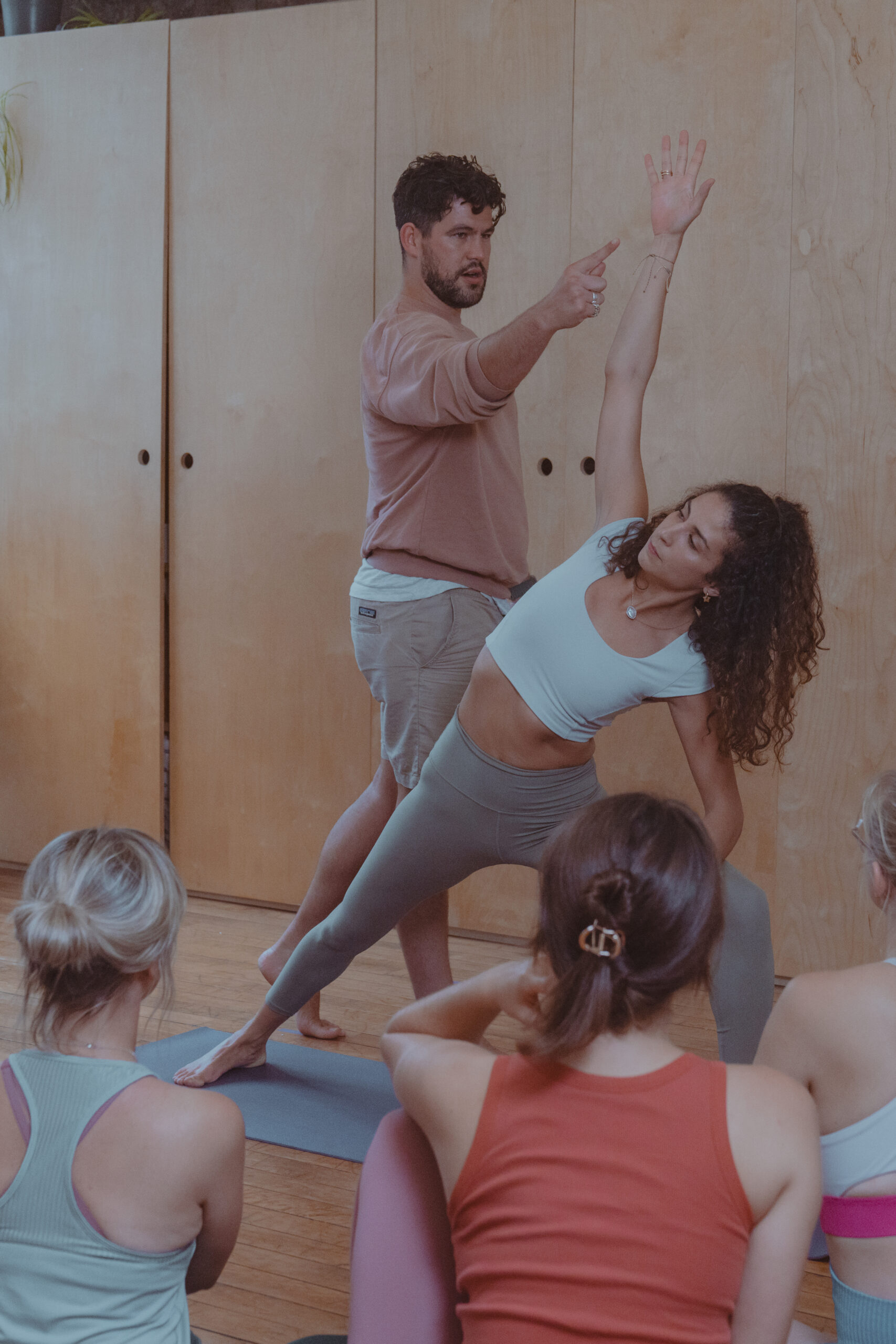Do you often wobble when practicing your standing poses, particularly those on one leg? Ahead of his workshop ‘stand on your own one foot’ Richard Rosen shares his insight into the benefits of wobbling.
I recently contributed a short chapter to a book titled ‘Embrace your Wobbles: Wisdom from the Yoga Mat’. Yes, you read that right, a collection of 13 essays extolling the positive side of something most yoga students, especially beginners, are well familiar with, but don’t typically have anything nice to say about, wobbling. Since I took my first class in 1980, I have 40 years experience with wobbling, and I now have it down to a fine art.
There are two kinds of wobbling, or maybe it would be better to say, wobbling assumes two related forms. The first is physical, most apparent in the 20-odd standing poses, even those with both feet on the floor, and especially those of the balanced-on-one-leg variety like tree (vrksha), half moon (ardha candra), and of course the most challenging of all these poses, warrior 3 (virabhadra 3).
The second form of wobbling is mental, what Patanjali called the vrittis or fluctuations of consciousness. Outer and inner wobbling are two sides of the same coin, they play off of and feed each other. Conversely, if we can still the wobbling of the body, which is typically easier to work with than consciousness, we can to some extent still the wobbling mind. This was, in fact, the purpose behind Patanjali’s use of asana. At the time he (or whoever it was) compiled the sutras, probably around 400 CE, asana hadn’t yet developed into its modern, quasi-gymnastic performance. It was nothing more than a “seat,” the literal meaning of asana (from as, to sit). The two criteria used to judge if one was successful were “steady and comfortable” (see YS 2.46). Unless and until the yogin could manage this, he was not permitted to advance to the next limb, pranayama.
I began my essay by trying to make everyone feel more accepting of their wobbling. I pointed out that because it’s slightly flattened at the poles – the East-West diameter of the Earth is about 30 miles more than the North-South diameter – the Earth isn’t a perfect sphere; rather, it’s what’s called an oblate spheroid, a little bit like an over-inflated football. Because of this, and a few other contributing factors, as the Earth rotates around its axis, like a student trying Tree Pose in his first yoga class, it wobbles. And if the Earth wobbles, it certainly should be acceptable if we all follow suit in some way.
This wobbling was actually predicted by Isaac Newton, and confirmed in 1891 by Seth Chandler, an American astronomer. The phenomenon was appropriately named the Chandler Wobble, which sounds more like a 50s dance fad or a condition caused by an inner ear disturbance. I went on to an investigation of the word “wobble” as it’s defined in a half dozen dictionaries. None of these word books supported my attempt to normalize wobbling, they defined it as “irregular, clumsy, trembling, vacillating,” not to mention all the “un-” words, “unbalanced, unsteady, uncertain, uneven.”
It seemed like the person who wrote this definition might have been one of my teachers at the San Francisco Iyengar Institute where I did my teacher training in the early 80s. To say the Iyengar world looks on asana wobbling with disapproval is a bit of an understatement. “STRAIGHTEN THAT BACK LEG,” the teacher would kindly suggest at the slightest hint of standing-pose wobbling. “MORE WEIGHT ON THE BACK HEEL THAN THE BALL OF THE FRONT FOOT,” he would gently coax, “STOP THAT WOBBLING,” he would insightfully instruct.
Anyway, I found one of the other chapters in the book, “Why Wobbles Matter: Scientific Evidence and Applications to Yoga,” extremely helpful in understanding wobbling from a more technical perspective. It was written by a pair of highly qualified PhDs, Dr Anne Shumway-Cook, Professor Emeritus in the Department of Rehabilitation Medicine at the University of Washington, and Dr Marjorie Woollacott, a professor of neuroscience at the University of Oregon. Their premise is that wobbles are neither necessarily “good” nor “bad,” but instead a useful “element in the process of growth,” for both the inner and outer wobbles.
What we call simply “falling over,” the doctors re-phase as “displacement of the centre point of the body beyond the base of support.” To the average student such “displacement” is “frustrating,” but the doctors point out that research has demonstrated that “developing good balance requires that we lose balance over and over again!” In other words, in order to perfect our balance, the “brain requires wobbles.”
Their approach then encourages us to stop resisting wobbles and notice them “without judgement,” thereby helping the brain “improve balance by giving us the awareness of the limits of stability in each pose.” Wobbles, they conclude, are a “healthy and natural part of yoga practice.” The good doctors go on from here to talk about the two kinds of wobbles in meditation, created by either too much or too little effort. I won’t go into detail about their research into these wobbles, except to say that like many things in our lives, defining something as “bad” is often times a self-fulfilling prophecy, it becomes “bad.” The doctors suggest that we perceive our wobbles as a challenging but “healthy and natural” part of our practice that’s “more likely to foster an open, relaxed, and curious attitude.”
Want to practice your “displacements” in one-legged standing poses? Join Richard Rosen for his online workshop ‘stand on your own one foot’ on Thursday 14th January.
‘Embrace your Wobbles‘ is available on Amazon.










